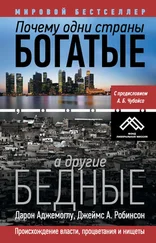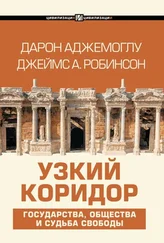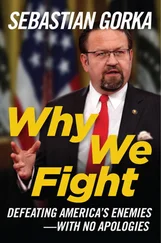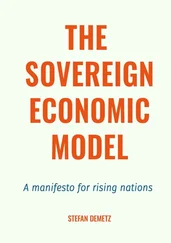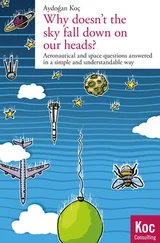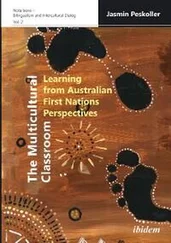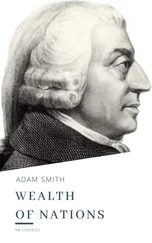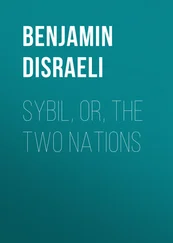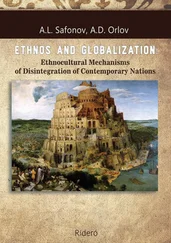Once elected, the paramilitary senators and congressmen voted for what Uribe wanted, in particular changing the constitution so that he could be reelected in 2006, which had not been allowed at the time of his first election, in 2002. In exchange, President Uribe delivered a highly lenient law that allowed the paramilitaries to demobilize. Demobilization did not mean the end of paramilitarism, simply its institutionalization in large parts of Colombia and the Colombian state, which the paramilitaries had taken over and were allowed to keep.
In Colombia many aspects of economic and political institutions have become more inclusive over time. But certain major extractive elements remain. Lawlessness and insecure property rights are endemic in large swaths of the country, and this is a consequence of the lack of control by the national state in many parts of the country, and the particular form of lack of state centralization in Colombia. But this state of affairs is not an inevitable outcome. It is itself a consequence of dynamics mirroring the vicious circle: political institutions in Colombia do not generate incentives for politicians to provide public services and law and order in much of the country and do not put enough constraints on them to prevent them from entering into implicit or explicit deals with paramilitaries and thugs.
EL CORRALITO
Argentina was in the grip of an economic crisis in late 2001. For three years, income had been falling, unemployment had been rising, and the country had accumulated a massive international debt. The policies leading to this situation were adopted after 1989 by the government of Carlos Menem, to stop hyperinflation and stabilize the economy. For a time they were successful.
In 1991 Menem tied the Argentine peso to the U.S. dollar. One peso was equal to one dollar by law. There was to be no change in the exchange rate. End of story. Well, almost. To convince people that the government really meant to stick to the law, it persuaded people to open bank accounts in U.S. dollars. Dollars could be used in the shops of the capital city of Buenos Aires and withdrawn from cash machines all over the city. This policy may have helped stabilize the economy, but it had one big drawback. It made Argentine exports very expensive and foreign imports very cheap. Exports dribbled to a halt; imports gushed in. The only way to pay for them was to borrow. It was an unsustainable situation. As more people began worrying about the sustainability of the peso, they put more of their wealth into dollar accounts at banks. After all, if the government ripped up the law and devalued the peso, they would be safe with dollar accounts, right? They were right to be worried about the peso. But they were too optimistic about their dollars.
On December 1, 2001, the government froze all bank accounts, initially for ninety days. Only a small amount of cash was allowed for withdrawal on a weekly basis. First it was 250 pesos, still worth $250; then 300 pesos. But this was allowed to be withdrawn only from peso accounts. Nobody was allowed to withdraw money from their dollar accounts, unless they agreed to convert the dollars into pesos. Nobody wanted to do so. Argentines dubbed this situation El Corralito, “the Little Corral”: depositors were hemmed into a corral like cows, with nowhere to go. In January the devaluation was finally enacted, and instead of there being one peso for one dollar, there were soon four pesos for one dollar. This should have been a vindication of those who thought that they should put their savings in dollars. But it wasn’t, because the government then forcibly converted all the dollar bank accounts into pesos, but at the old one-for-one exchange rate. Someone who had had $1,000 saved suddenly found himself with only $250. The government had expropriated three-quarters of people’s savings.
For economists, Argentina is a perplexing country. To illustrate how difficult it was to understand Argentina, the Nobel Prize–winning economist Simon Kuznets once famously remarked that there were four sorts of countries: developed, underdeveloped, Japan, and Argentina. Kuznets thought so because, around the time of the First World War, Argentina was one of the richest countries in the world. It then began a steady decline relative to the other rich countries in Western Europe and North America, which turned, in the 1970s and ’80s, into an absolute decline. On the surface of it, Argentina’s economic performance is puzzling, but the reasons for its decline become clearer when looked at through the lens of inclusive and extractive institutions.
It is true that before 1914, Argentina experienced around fifty years of economic growth, but this was a classic case of growth under extractive institutions. Argentina was then ruled by a narrow elite heavily invested in the agricultural export economy. The economy grew by exporting beef, hides, and grain in the middle of a boom in the world prices of these commodities. Like all such experiences of growth under extractive institutions, it involved no creative destruction and no innovation. And it was not sustainable. Around the time of the First World War, mounting political instability and armed revolts induced the Argentine elites to try to broaden the political system, but this led to the mobilization of forces they could not control, and in 1930 came the first military coup. Between then and 1983, Argentina oscillated backward and forward between dictatorship and democracy and between various extractive institutions. There was mass repression under military rule, which peaked in the 1970s with at least nine thousand people and probably far more being illegally executed. Hundreds of thousands were imprisoned and tortured.
During the periods of civilian rule there were elections—a democracy of sorts. But the political system was far from inclusive. Since the rise of Perón in the 1940s, democratic Argentina has been dominated by the political party he created, the Partido Justicialista, usually just called the Perónist Party. The Perónists won elections thanks to a huge political machine, which succeeded by buying votes, dispensing patronage, and engaging in corruption, including government contracts and jobs in exchange for political support. In a sense this was a democracy, but it was not pluralistic. Power was highly concentrated in the Perónist Party, which faced few constraints on what it could do, at least in the period when the military restrained from throwing it from power. As we saw earlier (this page–this page), if the Supreme Court challenged a policy, so much the worse for the Supreme Court.
In the 1940s, Perón had cultivated the labor movement as a political base. When it was weakened by military repression in the 1970s and ’80s, his party simply switched to buying votes from others instead. Economic policies and institutions were designed to deliver income to their supporters, not to create a level playing field. When President Menem faced a term limit that kept him from being reelected in the 1990s, it was just more of the same; he could simply rewrite the constitution and get rid of the term limit. As El Corralito shows, even if Argentina has elections and popularly elected governments, the government is quite able to override property rights and expropriate its own citizens with impunity. There is little check on Argentine presidents and political elites, and certainly no pluralism.
What puzzled Kuznets, and no doubt many others who visit Buenos Aires, is that the city seems so different from Lima, Guatemala City, or even Mexico City. You do not see indigenous people, and you do not see the descendants of former slaves. Mostly you see the glorious architecture and buildings put up during the Belle Epoch, the years of growth under extractive institutions. But in Buenos Aires you see only part of Argentina. Menem, for example, was not from Buenos Aires. He was born in Anillaco, in the province of La Rioja, in the mountains far to the northwest of Buenos Aires, and he served three terms as governor of the province. At the time of the conquest of the Americas by the Spanish, this area of Argentina was an outlying part of the Inca Empire and had a dense population of indigenous people (see Map 1 on this page). The Spanish created encomiendas here, and a highly extractive economy developed growing food and breeding mules for the miners in Potosí to the north. In fact, La Rioja was much more like the area of Potosí in Peru and Bolivia than it was like Buenos Aires. In the nineteenth century, La Rioja produced the famous warlord Facundo Quiroga, who ruled the area lawlessly and marched his army on Buenos Aires. The story about the development of Argentine political institutions is a story about how the interior provinces, such as La Rioja, reached agreements with Buenos Aires. These agreements were a truce: the warlords of La Rioja agreed to leave Buenos Aires alone so that it could make money. In return, the Buenos Aires elites gave up on reforming the institutions of “the interior.” So Argentina at first appears a world apart from Peru or Bolivia, but it is really not so different once you leave the elegant boulevards of Buenos Aires. That the preferences and the politics of the interior got embedded into Argentine institutions is the reason why the country has experienced a very similar institutional path to those of other extractive Latin American countries.
Читать дальше

